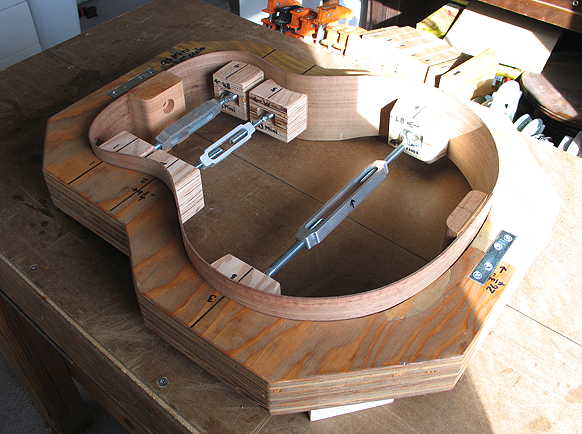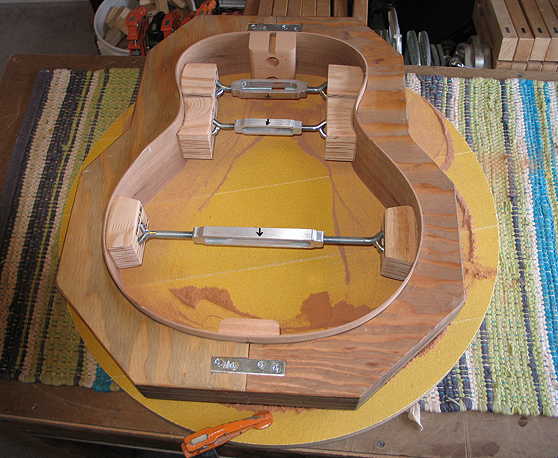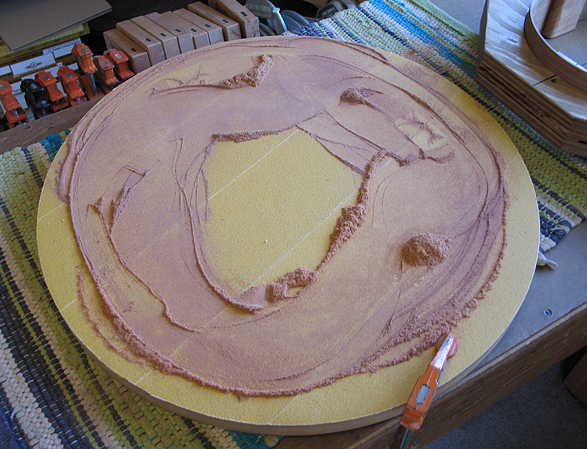Saturday, March 1st (ALREADY!!!), 2014:
Well, here's the side set, with the blocks glued in, in the mold with the spreaders.
What I will do next is to "drive the bus" --- that is, sand the 25' and 15' radiuses (radii?) into the top and back edges of the sides. What "drive the bus" means is that I take the whole assembly (the side set in the mold), place it topside/backside down in the appropriate radius dish, and swivel it back and forth in the radius dish ("driving the bus") until the radius curve is sanded into the rims' edges. The way I can tell it is finished, is that I first mark the edges with white marker; when the white marks are all gone, I'll know I have sanded the whole thing.
After that, it's on to cutting and fitting the 1" basswood block which will support the bevel.

|
|
Driving the bus:

Here I am sanding the 15' radius into the back edge of the sides. I grab the middle of the mold on both sides and just swivel it all in a circle, left and right, on the 80-grit sandpaper that is stuck to the radius dish. (It's like steering a bus with its steering wheel.)
Doing both the top and the back edges took me about an hour-and-a-half. It's pretty labor-intensive, actually! |
|
Here's the dust that is left behind, after you've sanded it down:

I save this dust in a ZipLok bag, in case I need some Mayan walnut dust later for filling any gaps. |